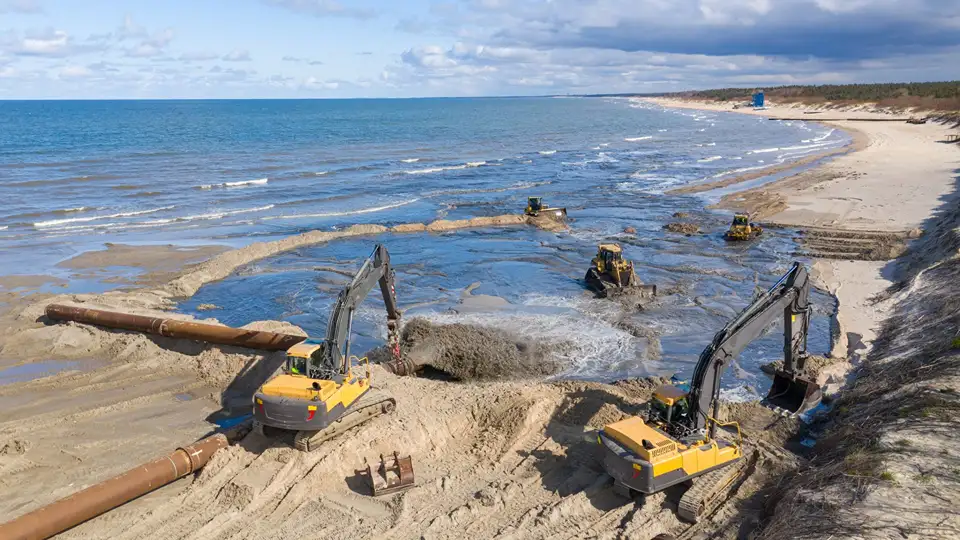Strengthening Glenelg North’s Coastline
The South Australian Government has announced the start of the Glenelg North beach nourishment project, aimed at improving the coastline’s ability to withstand harsh winter conditions. This annual initiative plays a vital role in maintaining the natural protection of the area’s beachfront, ensuring that local infrastructure and public amenities remain safeguarded against coastal erosion and storm surges.
This year’s project underscores the government’s commitment to ongoing storm resilience measures and sustainable coastal management practices along the Adelaide coastline.
Project Overview and Timeline
The Glenelg North beach nourishment work will officially commence on November 3, 2025, and is expected to continue through mid-November, depending on weather conditions. The Department for Environment and Water (DEW) is leading this initiative as part of its broader coastal protection program.
Low-tide conditions forecast for early November provide an ideal opportunity to complete the sand transfer efficiently. By strategically planning these activities, DEW aims to maximize the effectiveness of the nourishment and minimize disruption to the surrounding community.
Sand Source and Transportation Plan
The nourishment process will involve transferring between 20,000 m³ and 40,000 m³ of sand to Glenelg North. This sand will be excavated from the south side of West Beach Harbour and the nearby harbour beach, primarily from the sand fillet on the southern side of the flyover bridge.
Heavy machinery, such as excavators and trucks, will be used to transport the sand northward, replenishing sections of the beach that have eroded over the past year. This movement of sediment helps restore natural sand balance and maintains the beach’s protective buffer.
Purpose and Environmental Impact
The key objective of the Glenelg North beach nourishment project is to raise beach levels and enhance protection against the erosive forces of winter storms. By replenishing eroded areas, the project strengthens natural defenses that reduce the impact of high tides and storm waves.
Environmental considerations are also central to this project. The Department ensures that the sand replenishment process follows sustainable practices, sourcing materials from nearby locations to minimize ecological disturbance. Additionally, operations are scheduled to align with tidal conditions to reduce interference with marine life and coastal ecosystems.
Preparing for Winter Storms
Each year, Glenelg North faces significant wave activity during the winter season. Without adequate beach nourishment, these storms can cause severe erosion, undermining public pathways, recreational areas, and nearby infrastructure.
The current project focuses on building storm resilience through proactive coastal management. By reinforcing vulnerable sections before winter, the community benefits from improved safety, reduced maintenance costs, and sustained recreational access year-round.
Ongoing Coastal Management in South Australia
The Glenelg North beach nourishment is part of a larger series of coastal initiatives implemented by the South Australian Government. Similar sand recycling and replenishment works are regularly carried out at other key locations, such as West Beach and Henley Beach South.
Through these coordinated efforts, the state continues to address the long-term challenge of coastal erosion while promoting environmentally responsible management. These projects not only enhance storm resilience but also preserve the natural beauty and functionality of South Australia’s shoreline for future generations.
Safeguarding Glenelg North’s Shoreline
With the launch of the Glenelg North beach nourishment project, local residents and visitors can expect to see a visible improvement in beach conditions in the coming weeks. The project represents a proactive investment in the community’s safety and environmental sustainability.
As South Australia prepares for another winter, these efforts highlight the importance of continuous coastal maintenance and storm resilience planning. By protecting Glenelg North’s shoreline today, the state ensures a stronger, more sustainable coastline for tomorrow.
